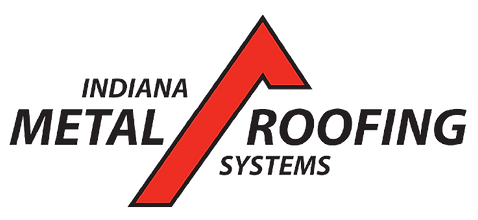Key Elements That Drive Up Roof Replacement Costs
- Joseph Justice
- Feb 24
- 3 min read
When planning a roof replacement, many homeowners are surprised by the factors that can influence the overall cost. Several variables, from materials to labor, impact the final price tag of a roof replacement project. Understanding these key elements can help you better prepare for the costs and make informed decisions. Indiana Metal Roofing Systems in Fort Wayne, IN, breaks down the common factors that drive up roof replacement costs.

1. Roofing Materials
The type of roofing material you choose will significantly affect the cost of your roof replacement. Each material varies in terms of durability, installation complexity, and cost.
Asphalt Shingles: The most common and cost-effective option, asphalt shingles are relatively inexpensive but may need more frequent replacement.
Metal Roofing: Known for its durability and longevity, metal roofing can be more expensive to install but offers a longer lifespan.
Slate or Tile: These materials are some of the most durable but are also the most expensive due to their weight and complexity in installation.
Did you know? Metal roofs last up to 50 years or more, but their installation costs can be 2-3 times higher than asphalt shingles due to their specialized installation requirements.
2. Roof Size and Complexity
The size of your roof is one of the most significant factors in determining the overall cost. A larger roof requires more materials and labor, increasing the total project cost. In addition, roof complexity plays a role. Roofs with multiple angles, steep slopes, or intricate designs require more labor and time to install.
Simple Roofs: A roof with a straightforward design will be easier and quicker to replace, leading to lower labor costs.
Complex Roofs: Homes with multiple peaks, valleys, and dormers will see higher labor costs due to the complexity of the installation.
3. Existing Roof Removal and Disposal
Another factor often overlooked is the cost of removing the existing roof. The more layers of roofing material that need to be stripped away, the higher the labor costs will be. Additionally, disposing of old roofing materials requires specialized services, which adds to the total cost.
Single-Layer Removal: If your roof has only one layer of shingles, removal will be quicker and less expensive.
Multiple Layers: Homes with two or more layers of shingles will take longer to strip, increasing labor costs.
4. Roof Accessibility and Obstacles
The ease with which a roofing crew can access your roof can also impact costs. Homes with extensive landscaping, narrow driveways, or no nearby paved surfaces may require extra time and effort to transport materials, set up equipment, and complete the project.
Difficult Access: If your home has obstacles like large trees or limited space for equipment, labor costs may increase.
Easier Access: Homes with flat or low-slope roofs and clear access points are easier to work on and often result in lower labor costs.
5. Structural Repairs
Sometimes, during a roof replacement, the underlying structure of the roof is found to be damaged. If there is rot, water damage, or structural issues, additional repairs will be needed before the new roof can be installed. These unforeseen costs can add a significant amount to the final bill.
Minor Repairs: Small areas of damage can be fixed relatively quickly, but they will still increase the overall cost.
Major Repairs: If a large portion of the roof deck is damaged or there are issues with the supporting structure, the cost of repairs can be substantial.
FAQs
1. What is the most affordable roofing material?Asphalt shingles are the most cost-effective option for roof replacement, but they may not last as long as other materials like metal or tile.
2. Can roof complexity increase labor costs?Yes, roofs with multiple angles, slopes, or intricate designs require more time and labor to install, increasing the overall cost.
3. Does removing the old roof add to the cost?Yes, removing existing roofing materials and disposing of them properly adds to the labor and disposal costs of the project.
4. How can I reduce roof replacement costs?Choosing more affordable materials, opting for simpler roof designs, and maintaining good roof access can help reduce costs.
5. Are structural repairs included in a roof replacement estimate?Structural repairs are typically not included in the initial estimate and may be added if damage is discovered during the roof replacement process.
Conclusion
Roof replacement costs can vary widely depending on the materials, size, complexity, and accessibility of your roof, along with any necessary structural repairs. To avoid unexpected costs, it’s essential to work with a reputable roofing company that provides transparent pricing and explains the factors influencing the project. Indiana Metal Roofing Systems in Fort Wayne, IN, offers expert roof replacement services to ensure your project is completed on time and within budget.
Read more about: Can Replacing Your Roof Increase Your Property's Value?


Comments